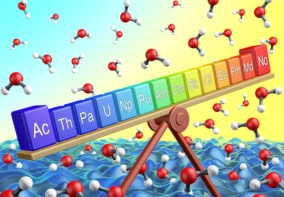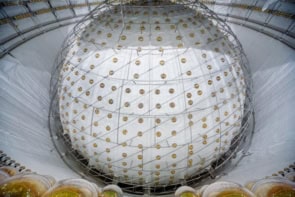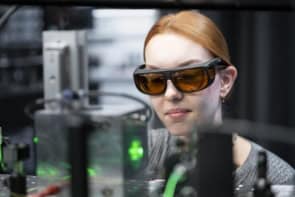A new method of separating nuclear isotopes that exploits the slight differences in their electronic energy levels has been developed by physicists in the US. The energy-efficient separator was used to create isotopically pure lithium-7, which is used in some nuclear reactors. The team is now developing the technology for a variety of isotopes used in science, engineering and medicine.
The only general method for separating isotopes is the calutron, which was invented during the Second World War to enrich uranium for the atomic bomb. A calutron is essentially a cyclotron that accelerates ions to extremely high energies while deflecting them using a magnetic field. Lighter isotopes of the same atom are deflected fractionally more than heavier isotopes, which allows them to be separated. However, the devices use an enormous amount of energy – up to a terajoule to produce a single gram of a pure isotope – making the process very expensive.
Specific processes have since been developed to isolate certain isotopes such as uranium, which is now enriched using gas centrifuges. The US closed its last large calutron in 1998, and for many isotopes the world now relies on devices in Russia that date back to the 1950s.
Shifting isotopes
In 2012 Mark Raizen and Bruce Klappauf at the University of Texas at Austin proposed an alternative to the calutron based on optical pumping, in which laser light changes the way an atom responds to a magnetic field (see “Isotope separation with a light touch”). Different isotopes of the same atom have slightly different electron energy levels: an effect called “isotope shift”. As a result, laser light of the right wavelength will cause an electronic transition in one specific isotope but not in the others. The final state of the isotope can be chosen so that the atom is deflected in a specific direction when it travels through a magnetic field, thus allowing the isotopes to be separated.
While the technique has already been demonstrated, the quantities produced were too small for industrial use. Now, the US-based team has built a machine that can produce large quantities of isotopes and has used it to isolate lithium-7, which is used by the nuclear industry. While naturally occurring lithium is mostly lithium-7, it also contains about 7.5% lithium-6. Lithium hydroxide is used as part of the anti-corrosion regimen in pressurized water nuclear reactors. There, it is exposed to neutrons, which encourage the lithium-6 to decay to a radioactive isotope of hydrogen that would be a serious hazard if it were to escape into the environment.
The separation technique begins with vaporizing lithium and then firing a 150 mW red laser at the vapour. This puts the lithium-6 atoms into an excited state – a process called “optical pumping” – while leaving the lithium-7 untouched. The vapour is then sent through a curved chamber lined on the outer edge with permanent magnets. The lithium-7 is repelled by the magnets and deflected out of the chamber where it is collected. Meanwhile, the lithium-6 is deflected onto the magnets and prevented from leaving the chamber.
Making medical isotopes
The result is 99.97% pure lithium-7 – which is good enough for use in a pressurized water reactor. Raizen believes that the energy cost of purifying a gram of lithium-7 would be “at least 250 times less than with the calutron and possibly as much as 1000 times less”. He has now started a non-profit foundation to develop industrial versions of the machine, mainly to produce medical isotopes.
Paolo de Natale of the European Laboratory for Non-linear Spectroscopy in Florence, Italy, says it is yet another example of how optical pumping, which was originally demonstrated in 1950, has shown itself to be useful for a real industrial process. He cautions that making the technique work for atoms other than lithium will not be a trivial task: for each new type of atom, researchers must find a suitable electronic transition and a suitable laser source. However, he adds that “Considering the tremendous progress in laser sources in recent years, it’s more or less always possible now to find the right laser sources with the right conditions.”
The research is published in Nature Physics.


